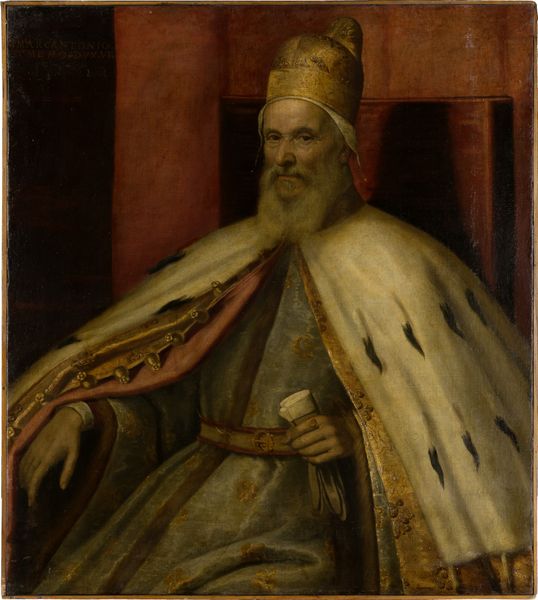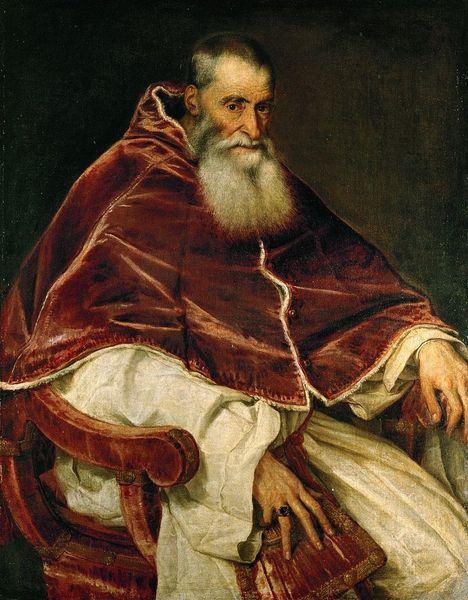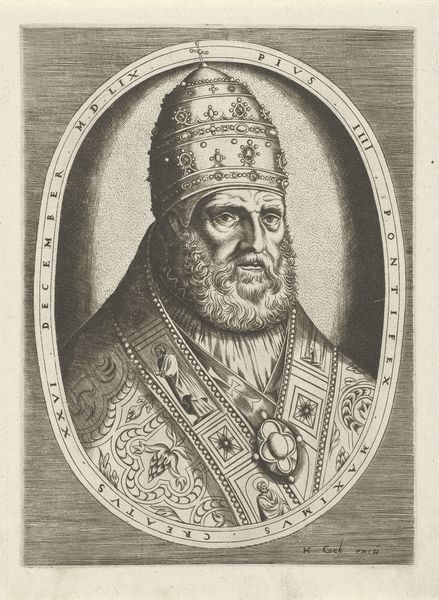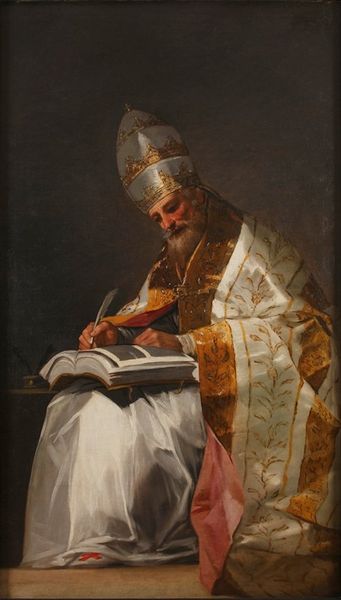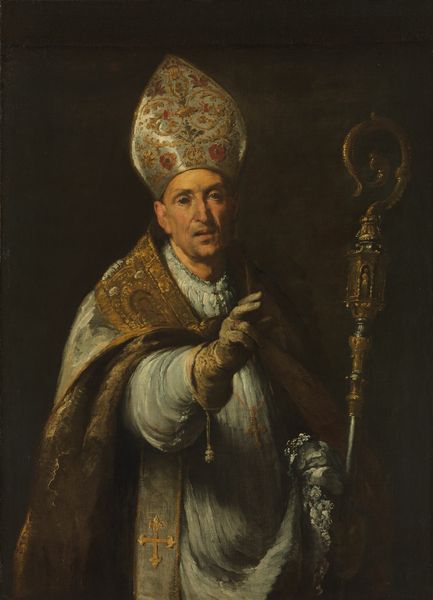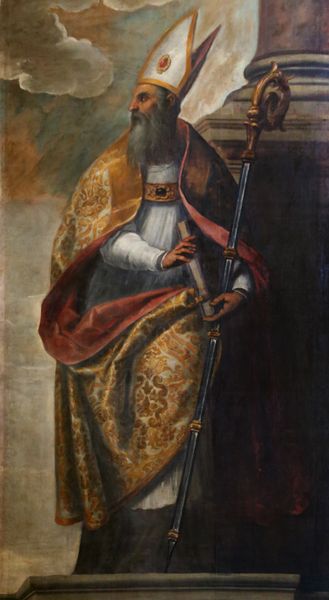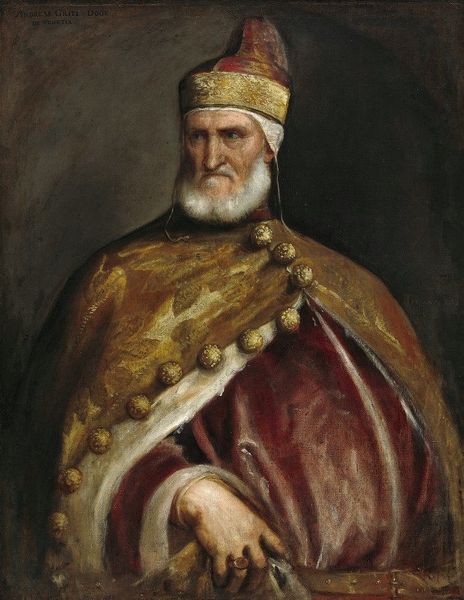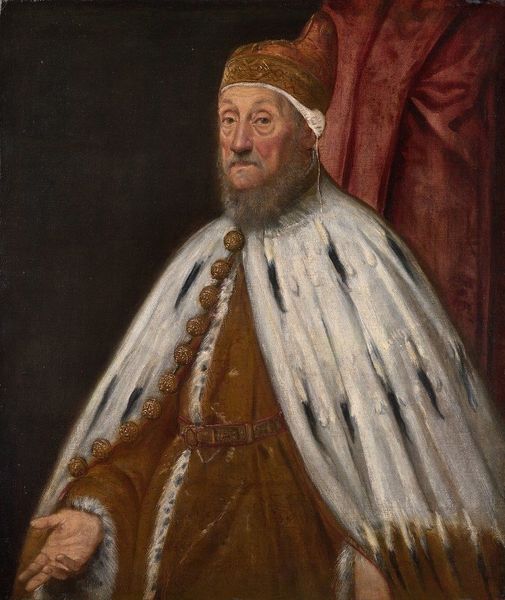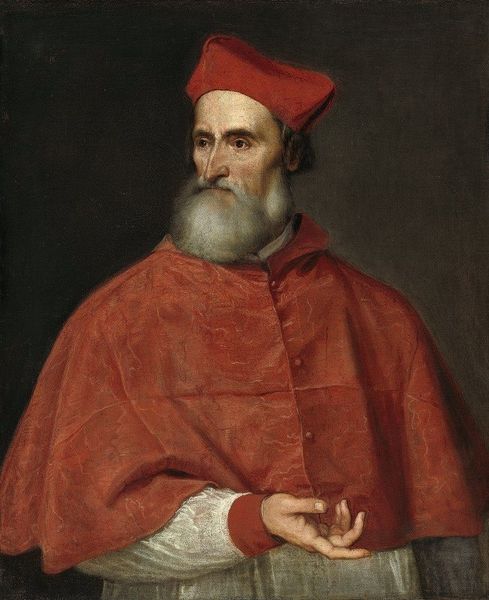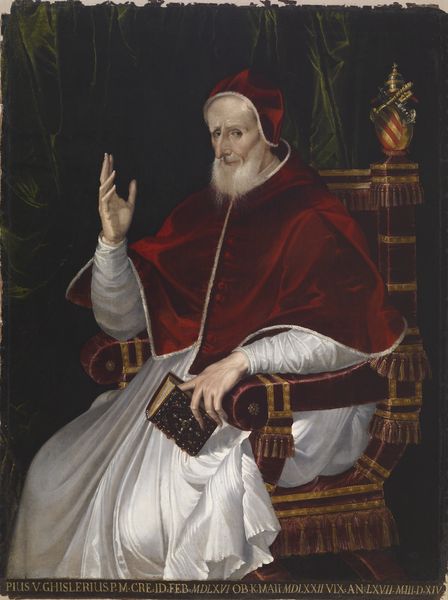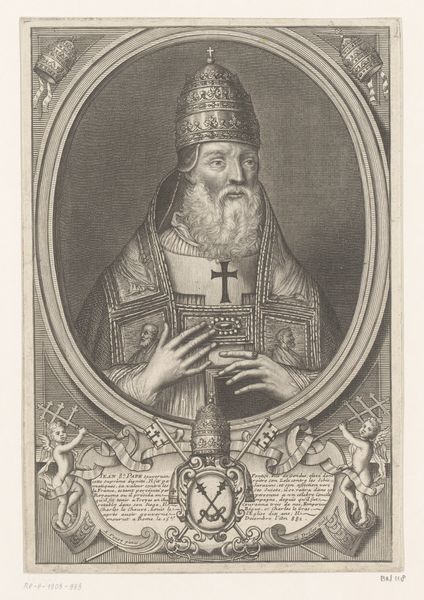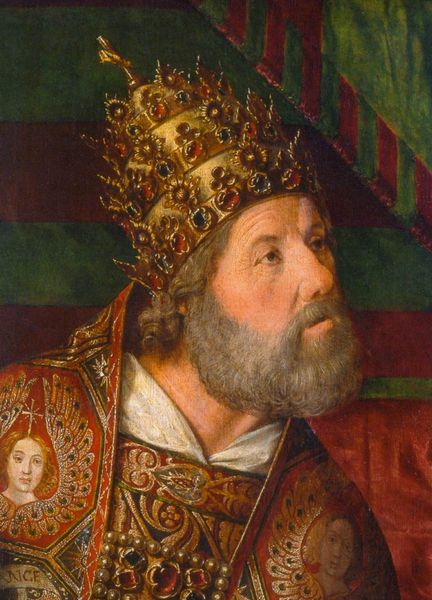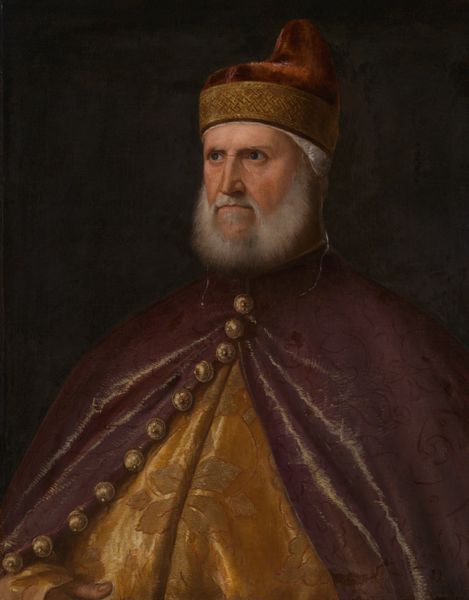
oil-paint
#
portrait
#
venetian-painting
#
baroque
#
oil-paint
#
oil painting
#
chiaroscuro
#
history-painting
Copyright: Public domain
This is Palma il Giovane’s “Portrait of Pope Pius V,” painted in oil on canvas, sometime around the late 16th or early 17th century. The oil medium itself is critical. Its capacity for slow drying allowed the artist to build up the image in layers, achieving a luminous density, especially in the Pope’s golden robe. Notice how the texture of the brushstrokes creates a palpable sense of volume and weight. The choice of oil paint, though now a ‘traditional’ art material, was then still relatively new in the context of painting in Venice, and its embrace relates to wider social issues of trade, given the pigment’s global sourcing. The painting is not just an image, it is also a crafted surface, an accumulation of skilled gestures, and a testament to the material transformations that underpin artistic expression. It reminds us that the visual impact of art is inseparable from the labor, materials, and techniques that bring it into being.
Comments
No comments
Be the first to comment and join the conversation on the ultimate creative platform.
